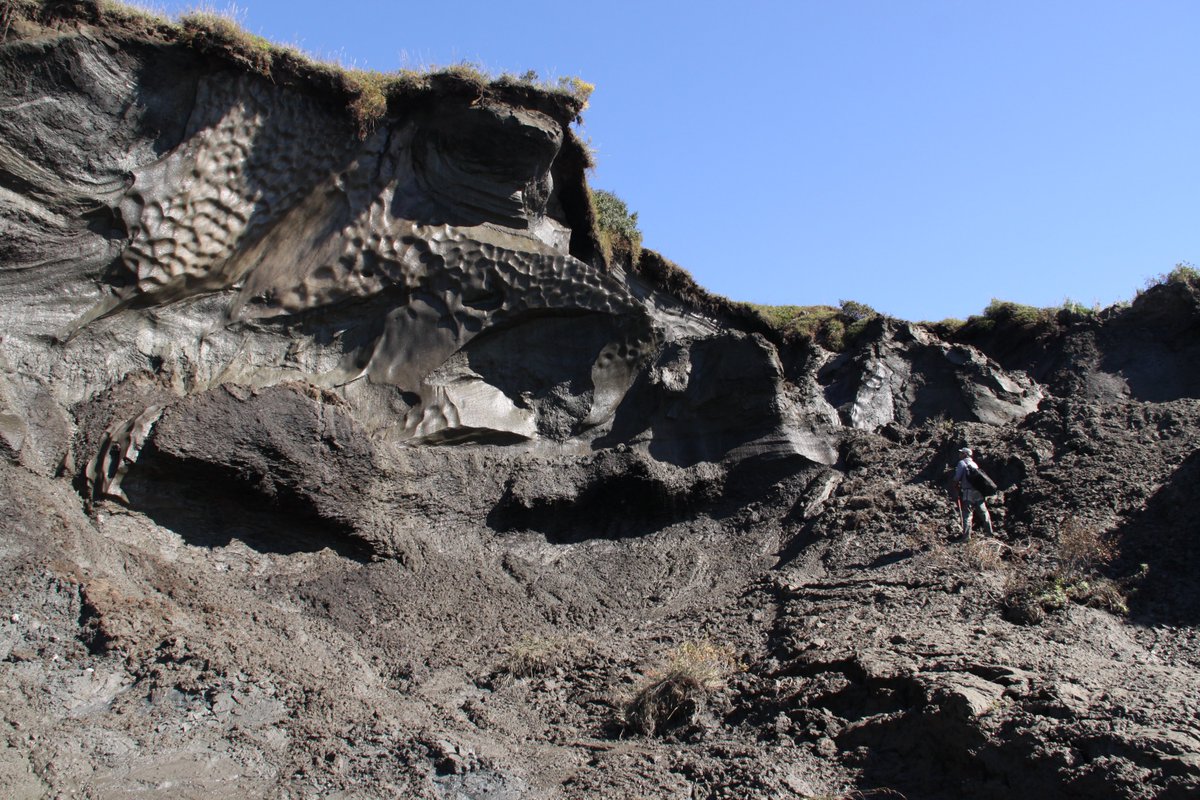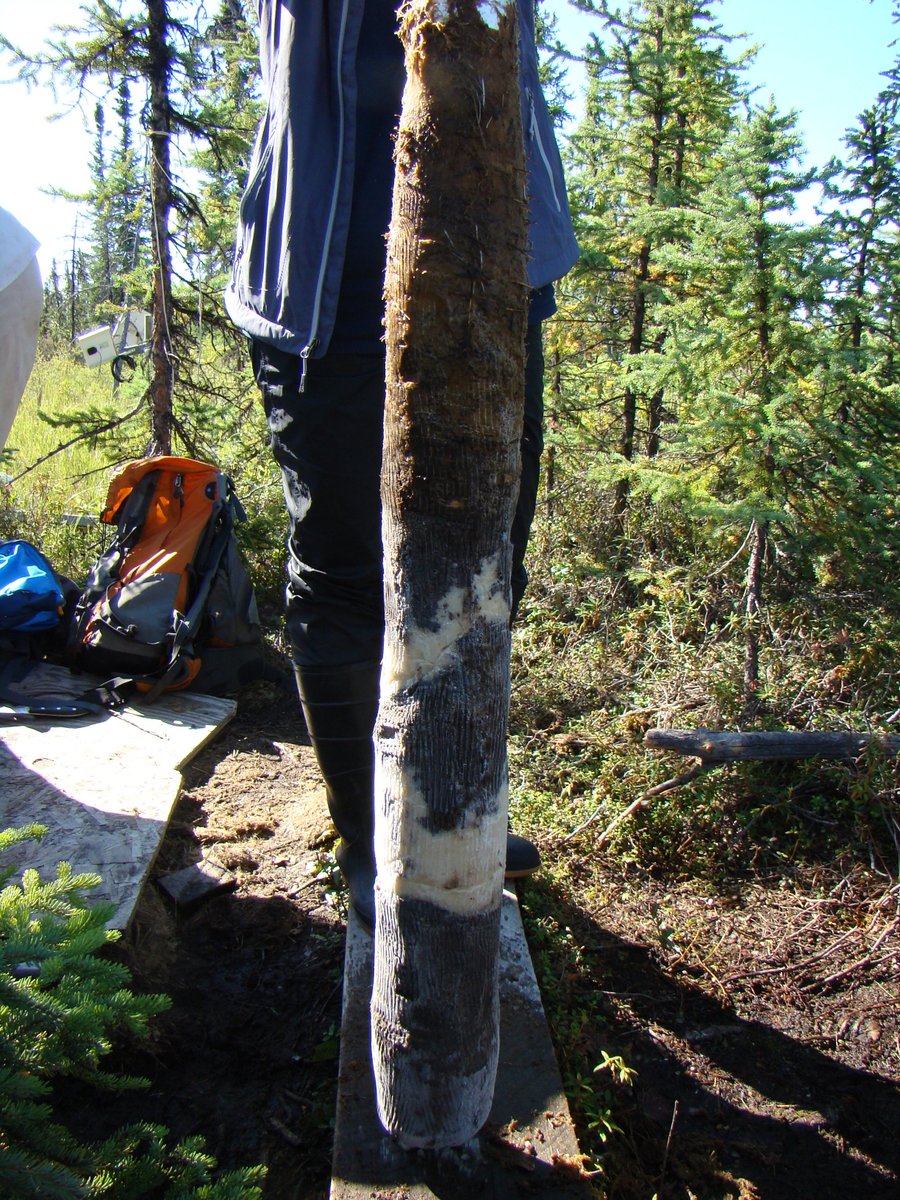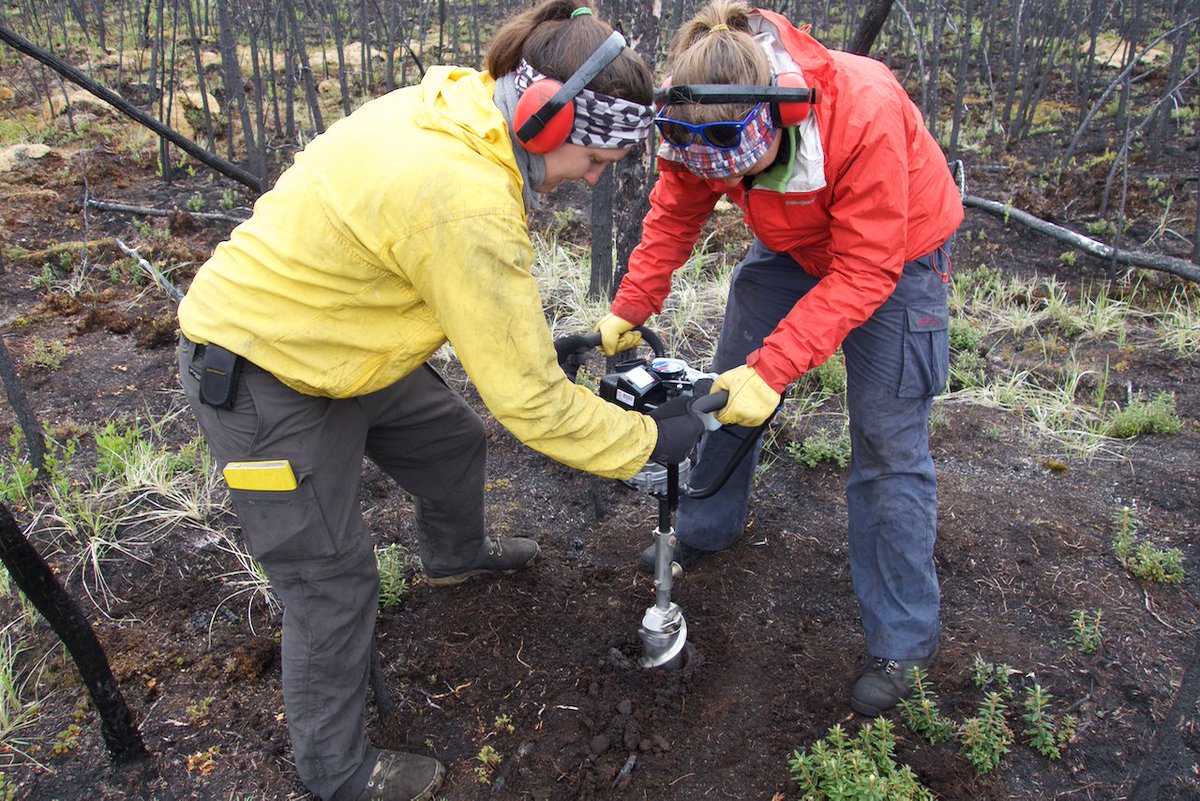
Please share to build awareness! Permafrost is being featured today at #COP26Glasgow. Here I will explain why this is SO important to our future climate and everything we know and love about the Arctic. Stick with me for a cooler than cool 🧵. Photo @grosse_guido 1/ 

Permafrost is diverse, comprised of frozen earth (rock, soil, sediment...). It often contains pockets of ice of all sizes. For many many 1000s of yrs, permafrost has been quietly doing its thing. Aggrading & locking atmospheric carbon into frozen ground. A true climate champ! 2/ 

Permafrost is a HIDDEN gem of the Arctic. Frozen ground is buried by a surface active layer (soil, moss) that freezes & thaws seasonally. But dig deeper, and we come across perennially frozen ground. This makes it difficult to study from surface or remote sensing measurements. 3/ 

Permafrost is discovery. When I take people into the field to experience permafrost, there is a universal reaction. When you place your hand in the soft earth and connect with frozen ground for the first time, there is glee & wonder. A core part of what it is to be human. 4/
Permafrost is the quiet friend who gets shit done. A friend of the Arctic, supporting ecosystems & infrastructure. Allowing for safe travel of hunters, harvesters, & wildlife. A friend of global climate, removing carbon from the atmosphere & keeping it safe in its frozen arms. 5/ 

In many regions of the Arctic, permafrost thaw is accelerating. This turns permafrost- once our climate friend- into a foe, releasing ancient carbon to the atmosphere. New biomass can offset some losses. To keep permafrost a friend of climate, we must reduce our emissions NOW. 6/
In many climate models, permafrost & its feedback to climate is IGNORED. Large scale models that do consider permafrost only consider a very simple type of thaw. We address this huge need & concern here. 7/ nature.com/articles/d4158…
So what's missing? Large scale models do not consider thaw of ice-rich permafrost. This thaw happens quickly and affects meters of ground over years instead of cm over decades. What does ice-rich permafrost look like? Check out these wonders!! 8/ 





Ice-rich permafrost also stores the most carbon. Areas prone to thermokarst (subsidence & erosion due to ice-rich permafrost thaw) affect ~20% of the Arctic but store ~50% of all permafrost carbon. No large scale model is currently addressing this.
This is a problem folks. 9/
This is a problem folks. 9/

From this, we know models UNDERestimate the strength of permafrost carbon feedbacks to future climate, & they also likely OVERestimate the time frame. @IPCC_CH reports suggest that permafrost will become more important to climate after 2100. It's likely to be sooner. 10/
Climate change is turning permafrost- a climate champion- into a foe with deep dark carbon & other mysteries we don't want to see. We can't save all Arctic permafrost, but we can save some if we reduce our emissions now. Let's keep permafrost on the safe side of climate. 11/ 

This is the end of my cooler than cool permafrost 🧵. I hope you think of permafrost as our friend, one that has done a lot for us, our climate, & the Arctic. Do you have more questions about permafrost? In honor of #COP26Glasow, ask me & I will do my best to answer. 12/12
• • •
Missing some Tweet in this thread? You can try to
force a refresh












